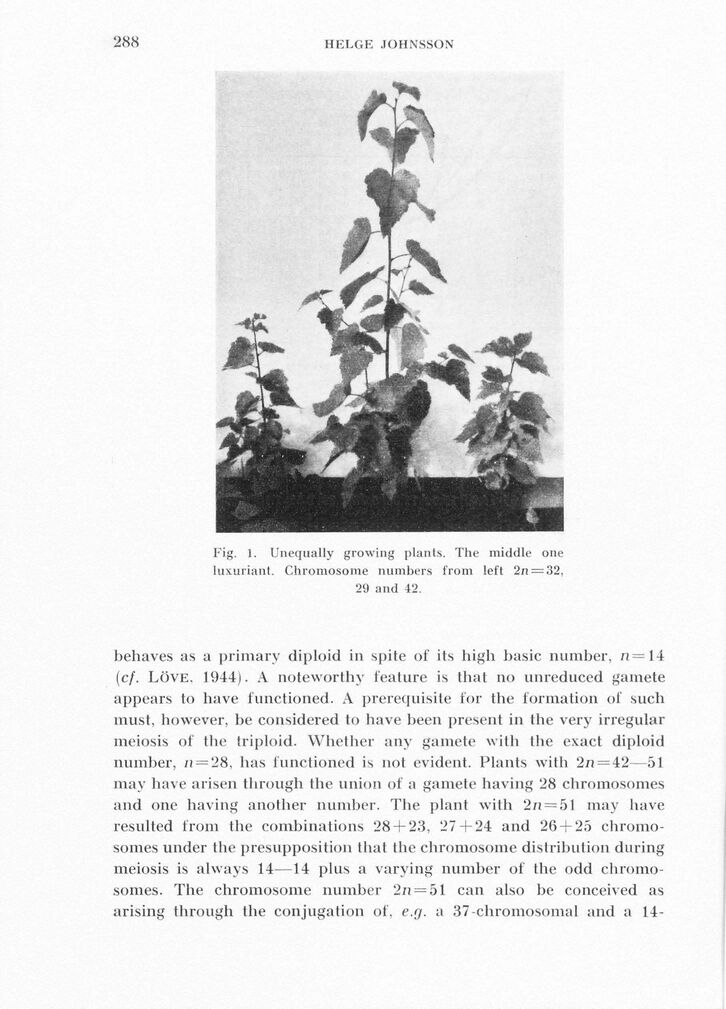
Full resolution (JPEG) - On this page / på denna sida - Sidor ...

<< prev. page << föreg. sida << >> nästa sida >> next page >>
Below is the raw OCR text
from the above scanned image.
Do you see an error? Proofread the page now!
Här nedan syns maskintolkade texten från faksimilbilden ovan.
Ser du något fel? Korrekturläs sidan nu!
This page has never been proofread. / Denna sida har aldrig korrekturlästs.
288
HELGE JOHNSSON
Fig. 1. Unequally growing plants. The middle one
luxuriant. Chroniosome numbers from left 2n = 32,
29 and 42.
behaves as a primary diploid in spite of its high basic number, n=14
[cf. Löve. 1944). A noteworthy feature is that no unreduced gamete
appears to have functioned. A prerequisite for the formation of such
must, however, be considered to have been present in the very irregulär
ineiosis of the triploid. Whether any gamete with the exact diploid
number, /i = 28, has functioned is not evident. Plants with 2n = 42—51
may have arisen through the union of a gamete having 28 chromosomes
and one having another number. The plant with 2/i = 51 may have
resulted from the combinations 28 + 23, 27+24 and 26 + 25
chromosomes under the presupposition that the chroniosome distribution during
meiosis is always 14—14 pius a varying number of the odd
chromosomes. The chroniosome number 2n = 51 can also be conceived as
arising through the conjugation of. e.g. a 37-chromosomal and a 14-
<< prev. page << föreg. sida << >> nästa sida >> next page >>